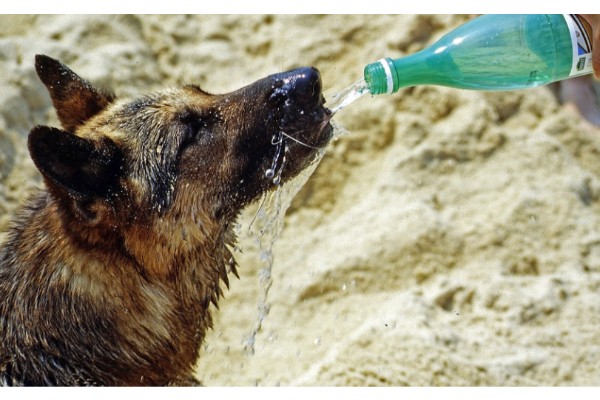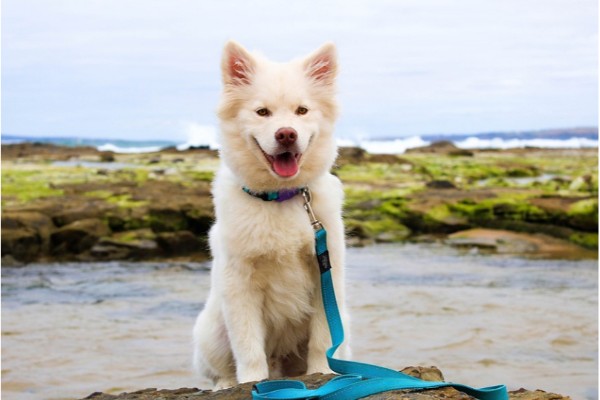Despite the fact that dog heat rash is a relatively common condition, it is crucial to work toward preventing it and treating it as soon as it manifests.
Table of Contents
What Is Heat Rash?
Overheating or exposure to sunlight in dogs can result in a heat rash. Overexposure can be caused by excessive sunbathing, walking in the sun, or becoming too hot without drinking enough water.
Heat rash is more likely to occur in dogs with short to medium-length coats, sensitive skin that is easily damaged, or folded skin (such as Pugs or Sharpei).
Is Heat Rash Possible In Dogs?
Yes, hot and muggy conditions are “just right” for a heat rash to appear. Heat rashes are particularly common in dogs that live in tropical climates.
Due to the fact that their skin folds trap heat and moisture, dogs with folds, such as pugs and share peis, are also susceptible to heat rashes.
What Signs Do Dogs Exhibit When They Are Overheated?
Heat rash should definitely be on your radar if your dog has been spending a lot of time outside in the hot sun. Heat rash affects dogs more severely in cases of obesity and in dogs with skin rolls and wrinkles. Check your dog for any signs of heat rash after a vigorous walk or play session in the backyard.
Symptoms of dog heat rash include:
- Itchy and irritated skin
- Tender and red skin in a concentrated area (typically near or underneath skin folds)
- Boils or small pimples in a concentrated area
- Scabs and sores
- Continuous scratching and licking
It can be challenging to diagnose dog heat rash because its symptoms are similar to those of other skin irritations. To rule out other conditions like allergies, infections, or insect bites, it is best to speak with your veterinarian if you notice any of the aforementioned symptoms. Your veterinarian at East Valley Animal Hospital will be able to identify the rash’s underlying cause and recommend a course of action for quick relief.

Diagnosing Heat Rash In Dogs
You should take your dog to the doctor for a diagnosis if it suddenly developed a rash after being exposed to the sun for a long time. If you don’t want to make your dog’s heat rash worse, it’s critical to get a diagnosis before treating it.
If your dog has a heat rash, your veterinarian will conduct a physical examination to find out. During this physical examination, the area where the rash is developing is examined to ascertain whether heat, an allergic reaction or another factor is to blame. Your veterinarian will also assess the severity of your dog’s heat rash, which is crucial in determining the best course of action.
A smear of the rash may be examined under a microscope by your veterinarian when you visit them for a diagnosis of a heat rash to determine whether it is infected. Your dog may have a heat rash infection if there are many white blood cells in the affected area.
How Do Heat Rashes On Dogs Appear?
Every dog owner should have a fundamental understanding of what heat rash on dogs looks like because it is crucial to recognize it during the summer. It’s best to get a diagnosis from a vet who has experience treating heat rash since it’s simple to confuse heat rash with other types of rashes your dog may have.
Dogs who experience heat rash initially experience a fairly typical rash that causes itching and redness in the affected area. Heat rash can eventually lead to boils, pimples, and scabs in the affected area, and as it worsens, you might even notice a bad odor emanating from your dog’s skin.
As a result of your dog scratching its rash, heat rash can also result in a secondary infection. Make sure your dog receives a vet’s diagnosis of heat rash and take action to prevent scratching and other potentially harmful behaviors.
How Do Heat Rash In Dogs And People Differ?
At the very least, heat rash can be painful and uncomfortable. Much like humans, dogs experience the following effects:
- Itching
- Irritation
- Potential infection from scratching
- Prickly feeling
- Pustule bumps
How Do Heat Rash In Dogs And Humans Differ?
Dogs, other animals, and humans all experience heat rash in a very similar way. But unlike dogs, humans are less likely to lick their wounds. Incessant licking has a few other effects in addition to occasionally assisting in wound healing.
Your dog is trying to tell you something is wrong if he licks a spot more frequently than usual. You should look for trouble where he is licking because of this clear indication. Infections can also be brought on by constant licking, which accelerates the growth of bacteria.

Dog Heat Rash Treatment And Home Remedies
Fortunately, dogs’ cases of heat rash can frequently be handled at home. Here are some widely used home cures for heat rashes.
Hydrocortisone Cream
Dermal inflammation and redness are reduced by hydrocortisone cream. Your veterinarian will give you instructions on how often to apply the cream to the rash and how to do so.
Aloe Vera
Skin that has been irritated by a heat rash responds amazingly well to aloe vera gel. If you can, squeeze the gel straight from the plant. If not, store-bought gels also function.
Cold Towel
Naturally, applying a cold towel to the rash will not completely heal it, but your dog will benefit from the cooling sensation.
If a heat rash becomes infected, veterinary care is required. If this occurs to your dog, your vet will recommend an antibiotic medication, either as a topical cream or pill. They might also suggest a medicated shampoo with an antibiotic component.
How Long Until Heat Rash Dissipates?
Nobody wants to see their dog suffer more than necessary, whether it be from dog heat rash or anxiety symptoms. How long does it take for the heat rash on your dog to go away since it may be causing them a lot of pain?
The good news about heat rash in dogs is that, once you start treatment, it usually disappears in a short amount of time. Heat rash may disappear in as little as 3 to 7 days once you begin using the cream or aloe vera that your veterinarian advises you to use to treat it. Remember that the severity of your dog’s rash and how quickly you start treating it may affect how long the heat rash lasts.
How To Prevent Heat Rash In Dogs
heat rashes are no fun for your dog, and luckily it’s easy to prevent them with these tips.
Keep your dog out of the sun and the heat.
Avoid taking your dog outside in the summer during the hottest hours of the day. Instead, take your dog for walks in the early morning and late afternoon.
Keep your dog cool.
On a hot, muggy day, a quick spritz of cold water or a full-on cool-down with a water hose will help prevent your dog from overheating. To keep cool, you could also allow your dog to swim in a dog pool.
Offer shade.
Your dog can relax and cool off in a shaded area. You have the ideal opportunity to cool them off while they are sleeping in the shade.
Monitor your dog.
Bring your dog inside if you notice that he is panting heavily and appears exhausted. While he is cooling off, offer him water that is at room temperature.

Summary
A frequent issue, particularly in the summer, is canine heat rash. When you’re outside in the sunshine with your dog, be on the lookout. Cool down your dog if you see signs of heat rash, then get in touch with your vet for a diagnosis and treatment plan.
